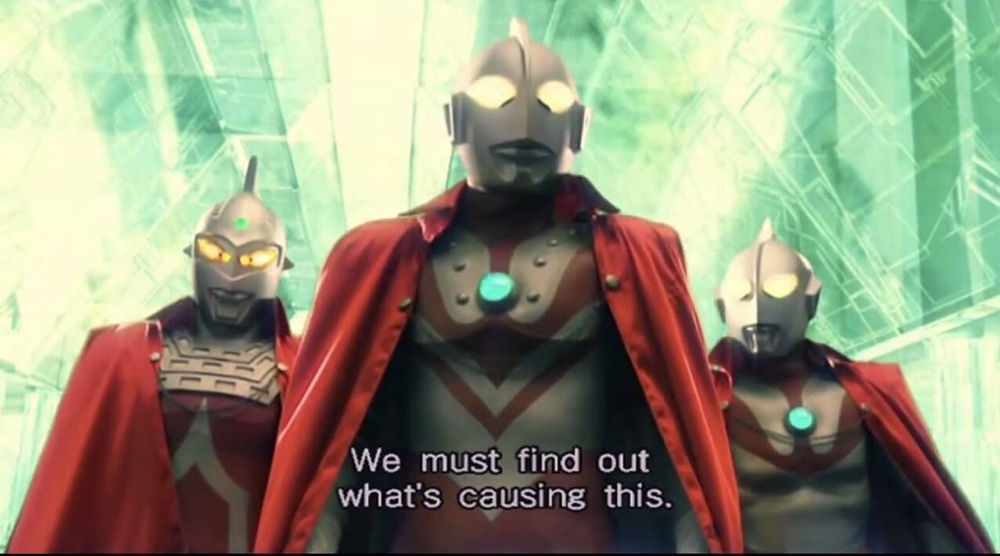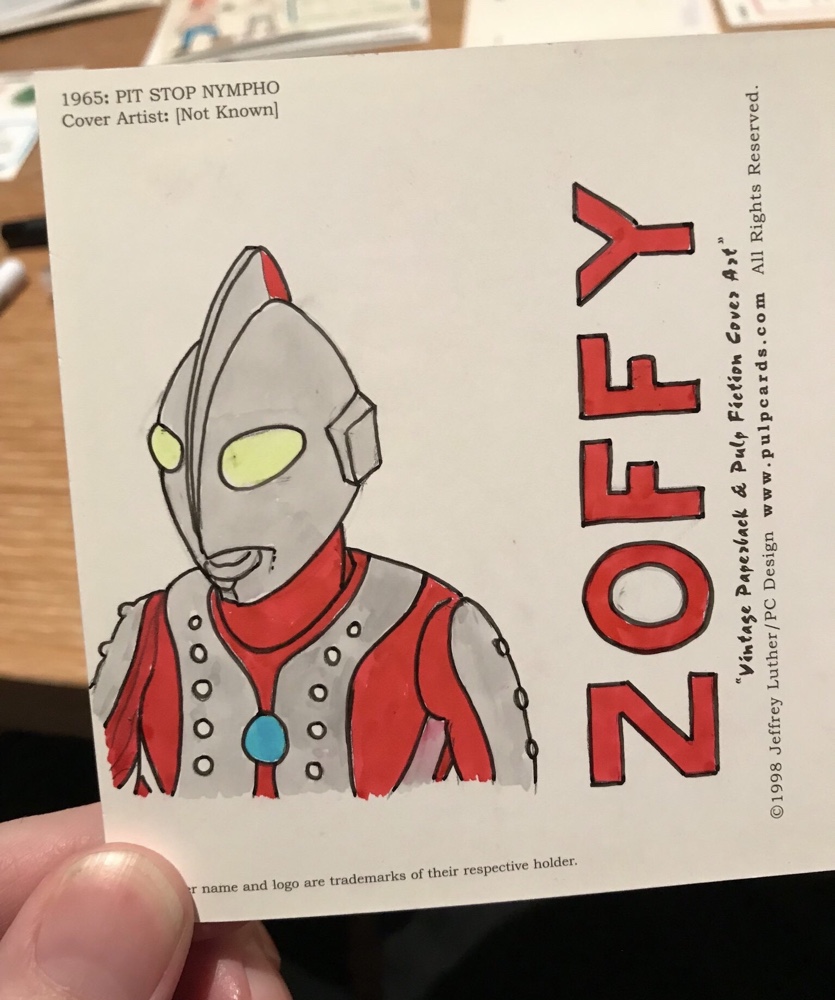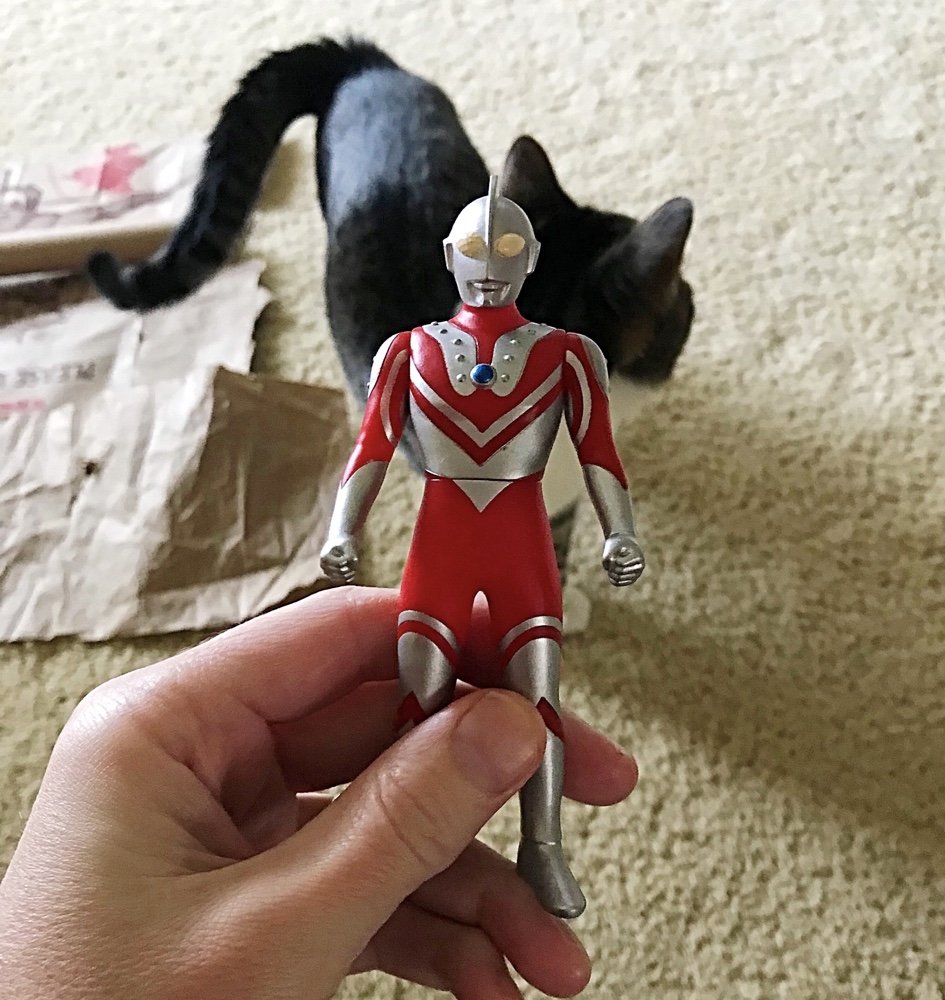While in Japan back in January I picked this up:

It’s a weird superdeformed Hatsune Miku model kit that I previously didn’t even know existed. Even better it was only about $20! Today I made it.
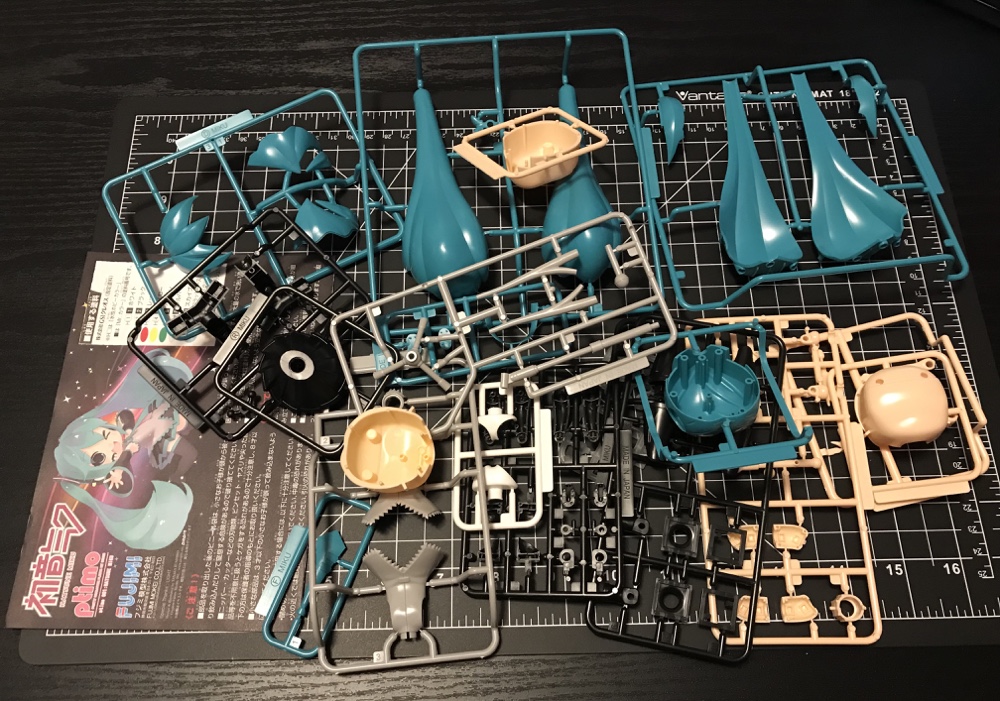
So far so good, lots of pieces in many colours. However I immediately noticed that the runners were all single colour, that the plastic was somewhat brittle and that there was a frankly unacceptable amount of flash on many pieces:
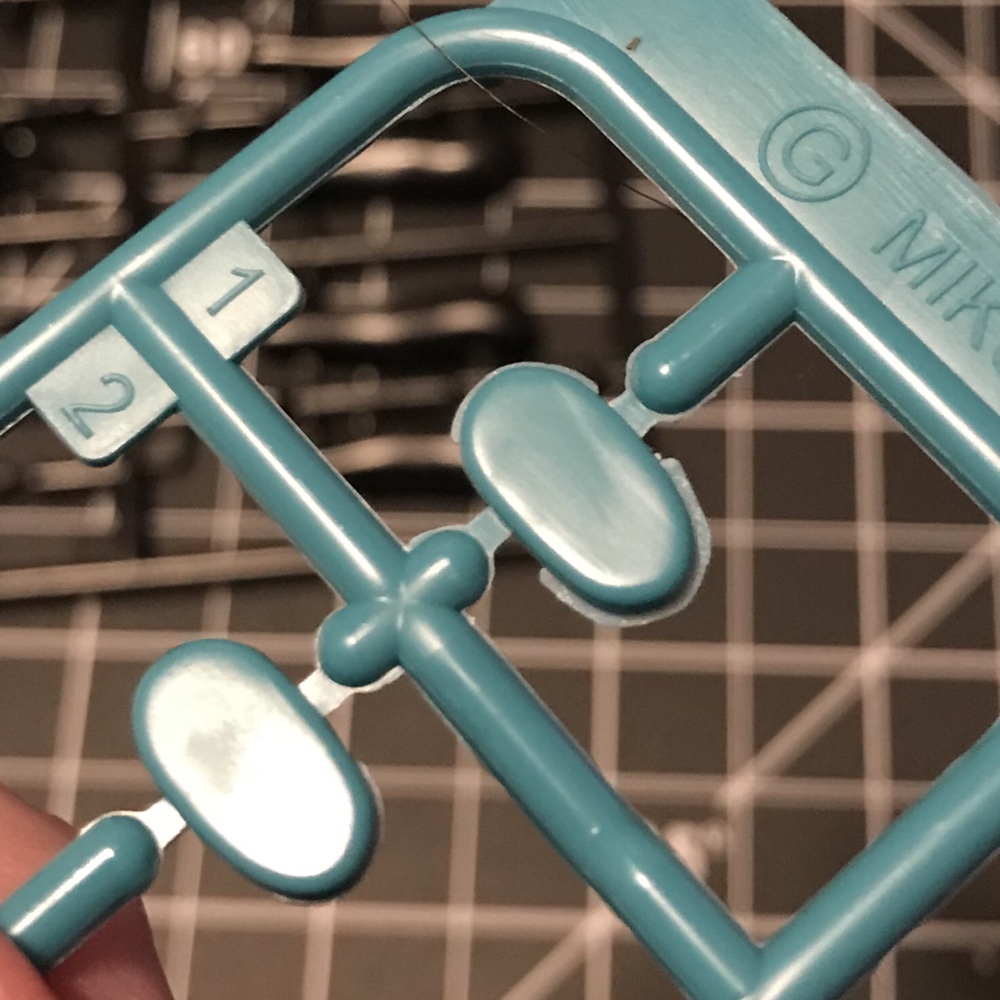
I usually make kits by Bandai (Gundam) or Kotobukiya (ZOIDS, Frame Arm Girls) and the QC on those kits is so high that I can’t recall ever seeing flash. Furthermore they have multicoloured runners, pieces made of all sorts of plastic (or even rubber or metal) and everything goes together perfectly.
Here, not so much. Assembly was tricky and at times difficult, seams were often visible and due to the brittle plastic a few pins even broke off when I tried to attach pieces. But I soldiered on and in a couple of hours had mostly finished:
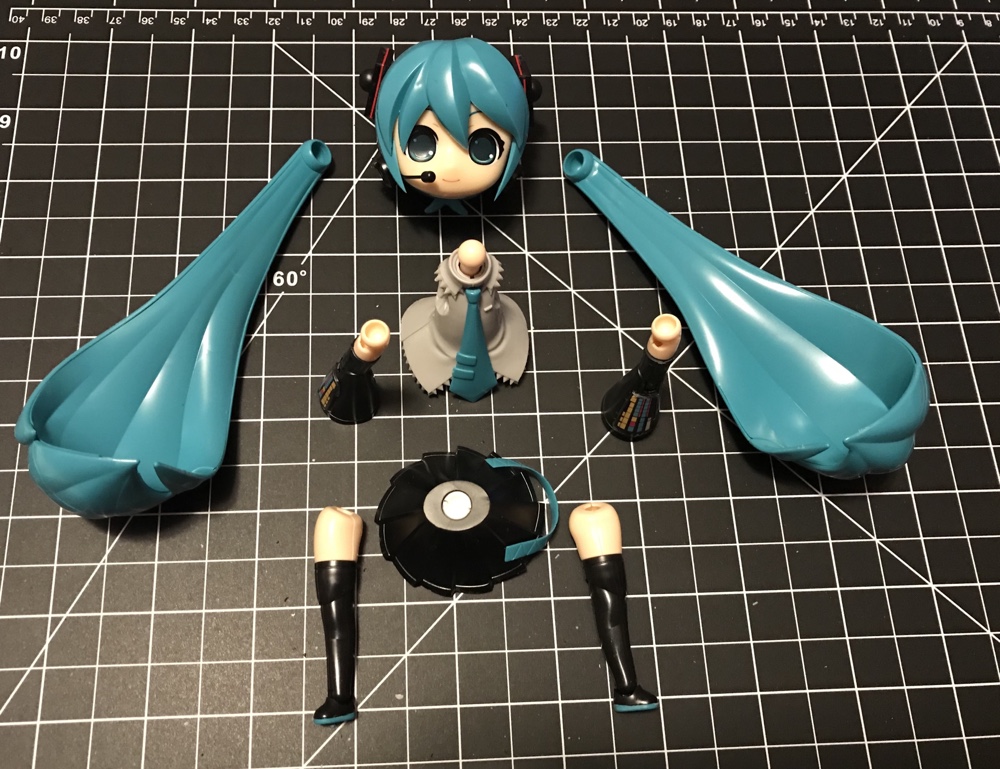
Look at those tiny legs! The kit didn’t come with a stand and while I initially assumed the hair would function as some sort of standing mechanism this wasn’t the case. In short, she can’t stand at all and even though she looks ok complete she’s definitely supported by the books in this photo:

Yes she’s cute, even unpainted. But it was a frustrating build, and not half as good as the other Miku kit I made a while ago. But I have to say assembly was fun, if only because I had a helper…
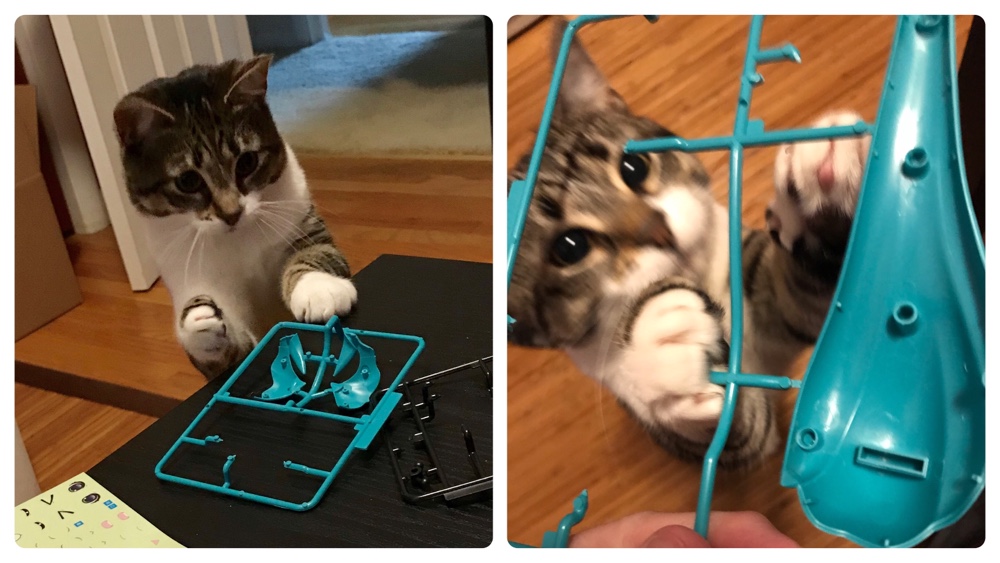
So Ptimo was a bit second-rate compared to the (admittedly far more expensive) other kits I usually buy. Would I recommend them? No. Would I buy Ptimo again? Well… it turns out I already had:

Yes this was another Japan pickup, and yes it is (incredibly) a Rilakkuma model kit! It was newer and more expensive than Miku. Here’s the parts:
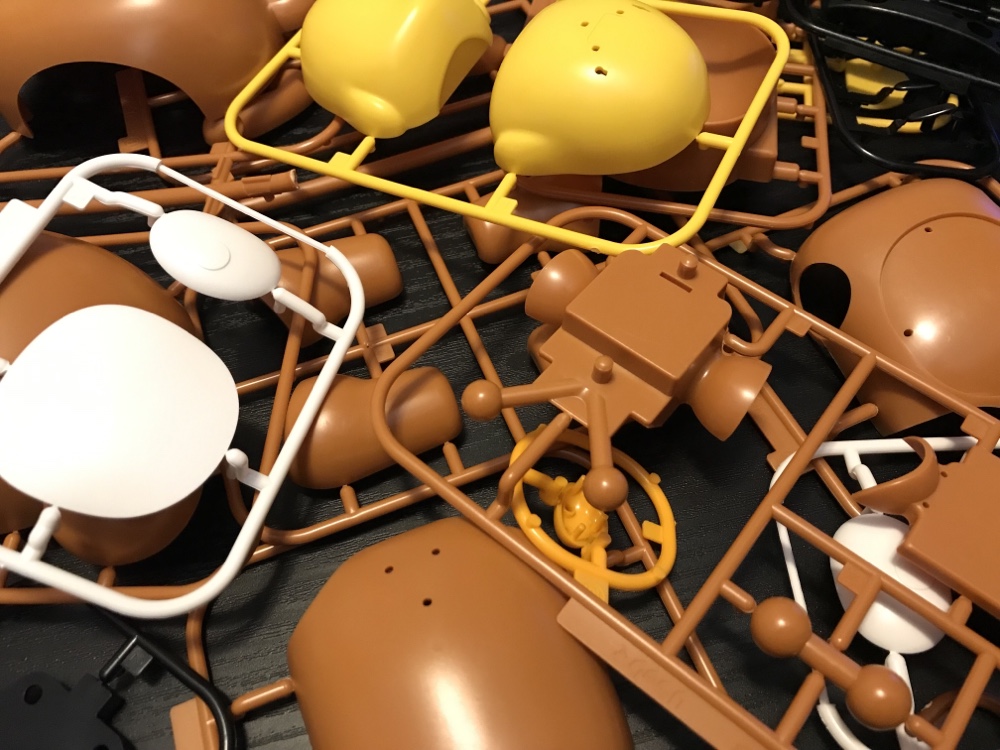
Unfortunately this kit had the same flaws as Miku, especially in ease of assembly. Kuma’s head in particular stubbornly resisted going together seamlessly and of course once completed he was incredibly difficult to stand unaided:

But they look great don’t they?!? Though it was a fiddly kit to make, with frustrating imperfections, I’ve got to say I’m happy with them both for the uniqueness. Overall the better of the two kits.
Lastly, speaking of Miku kits, I also in Japan bought the astonishing Frame Arm Miku kit (on the actual day of release no less). This will be my next build and assuming it doesnt disappoint you can look forward to seeing it here…








